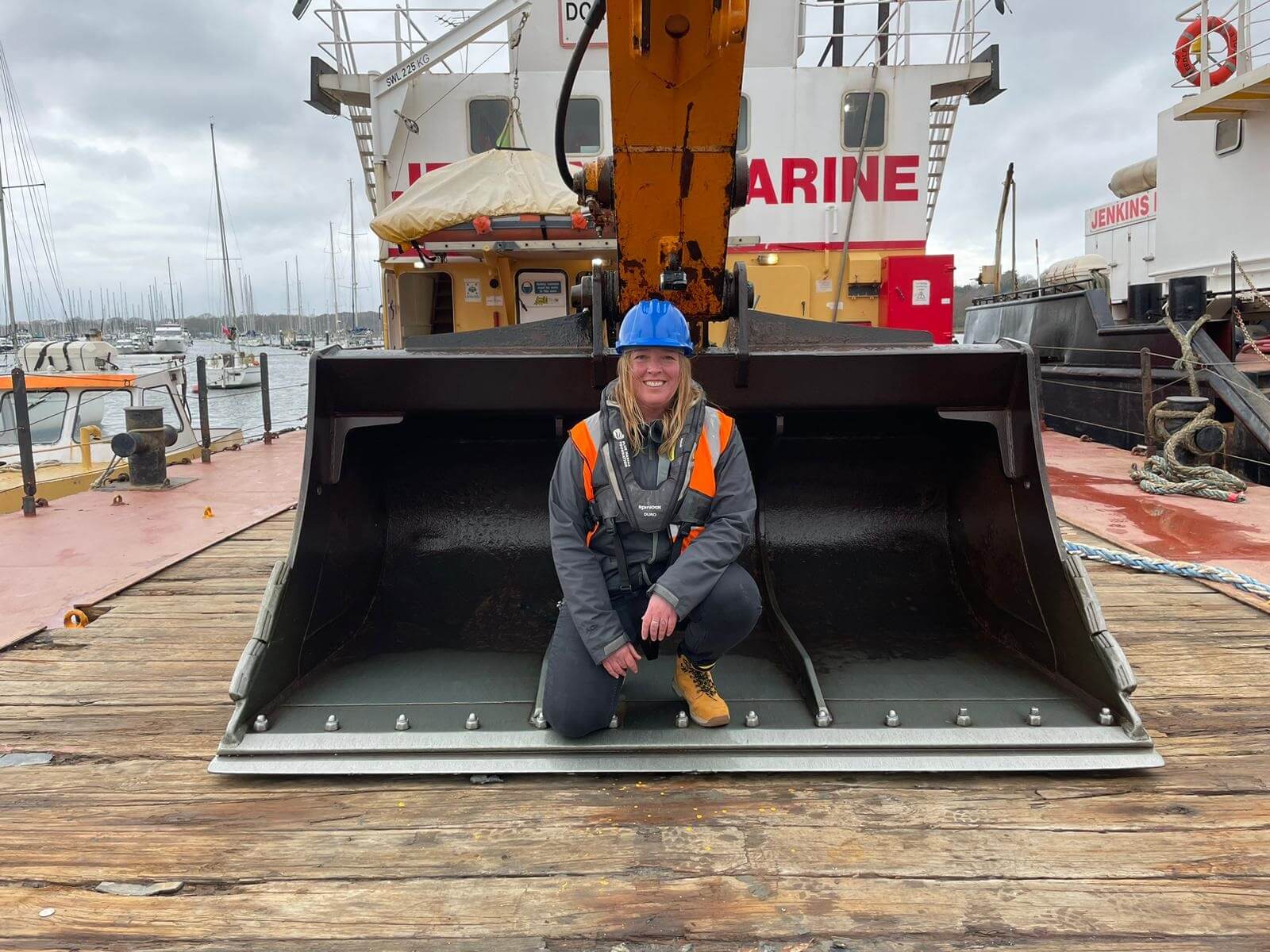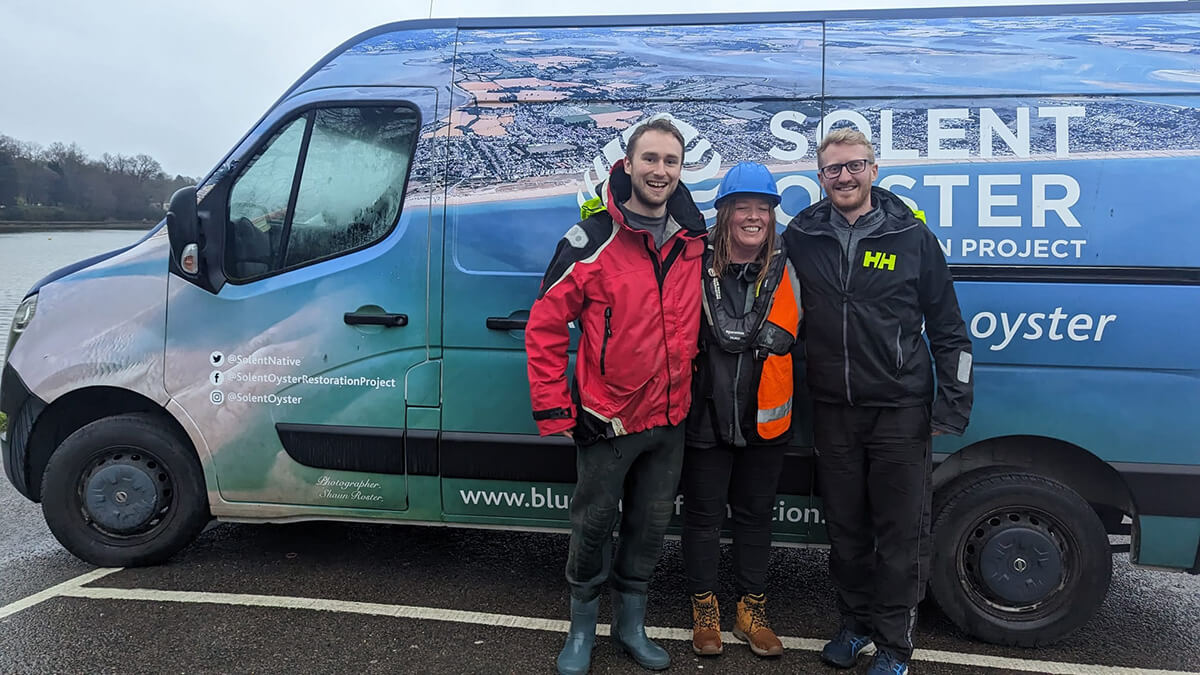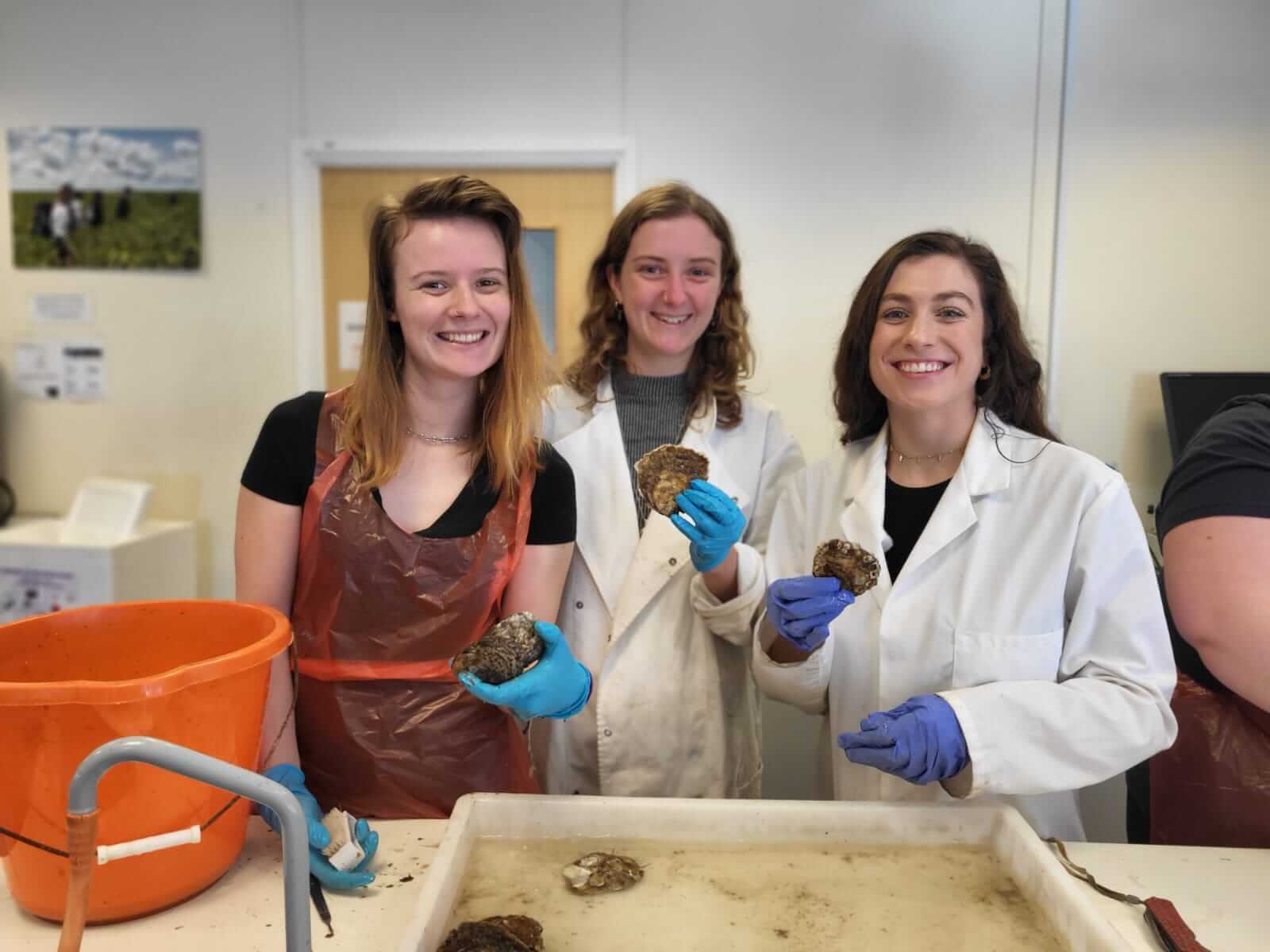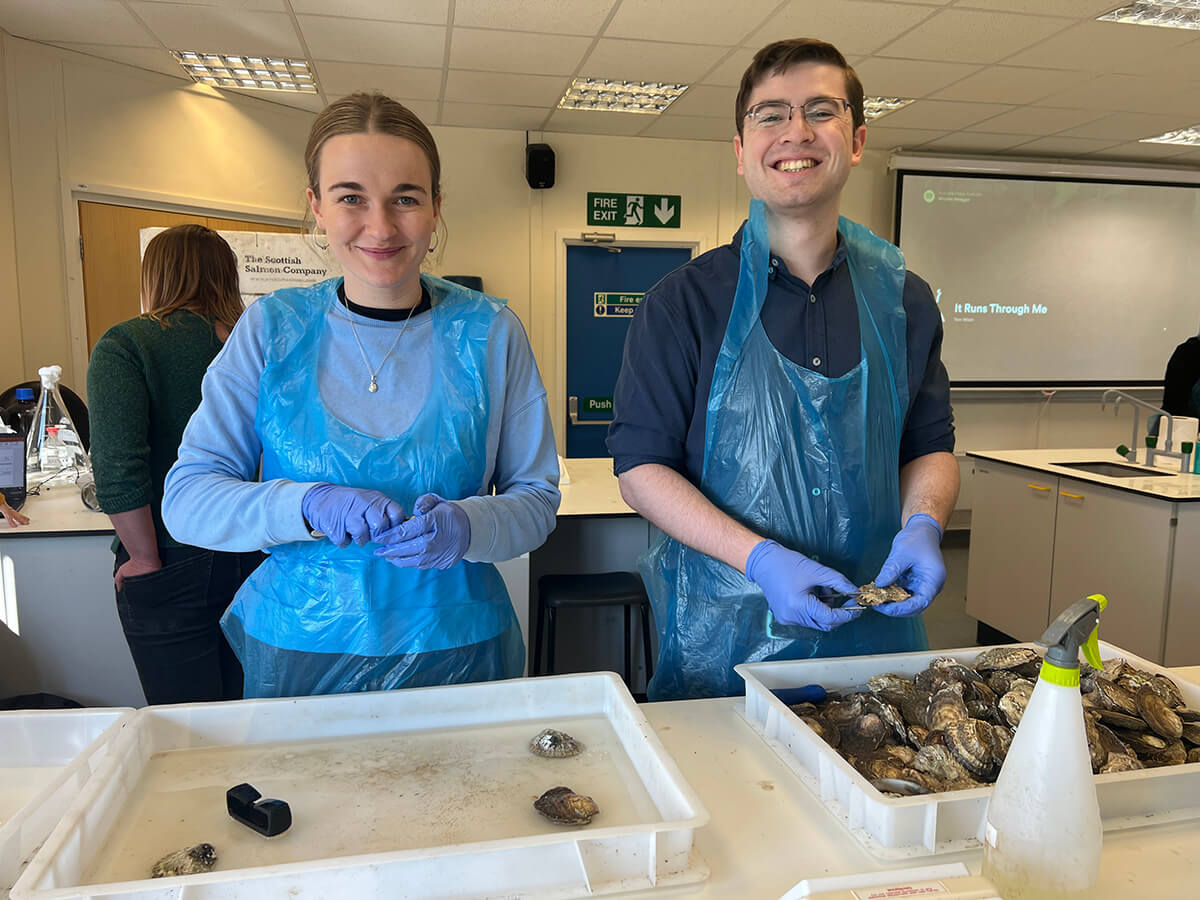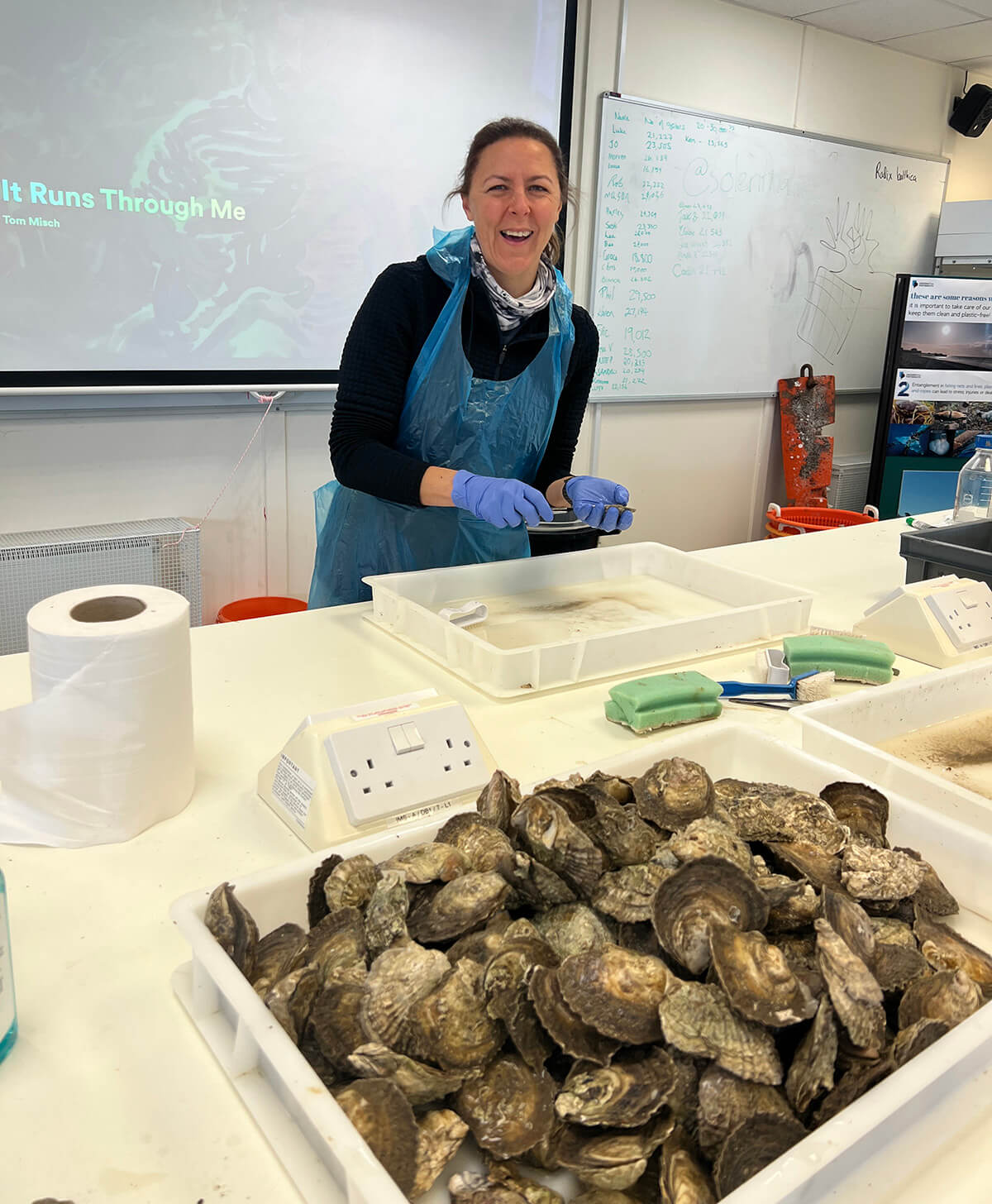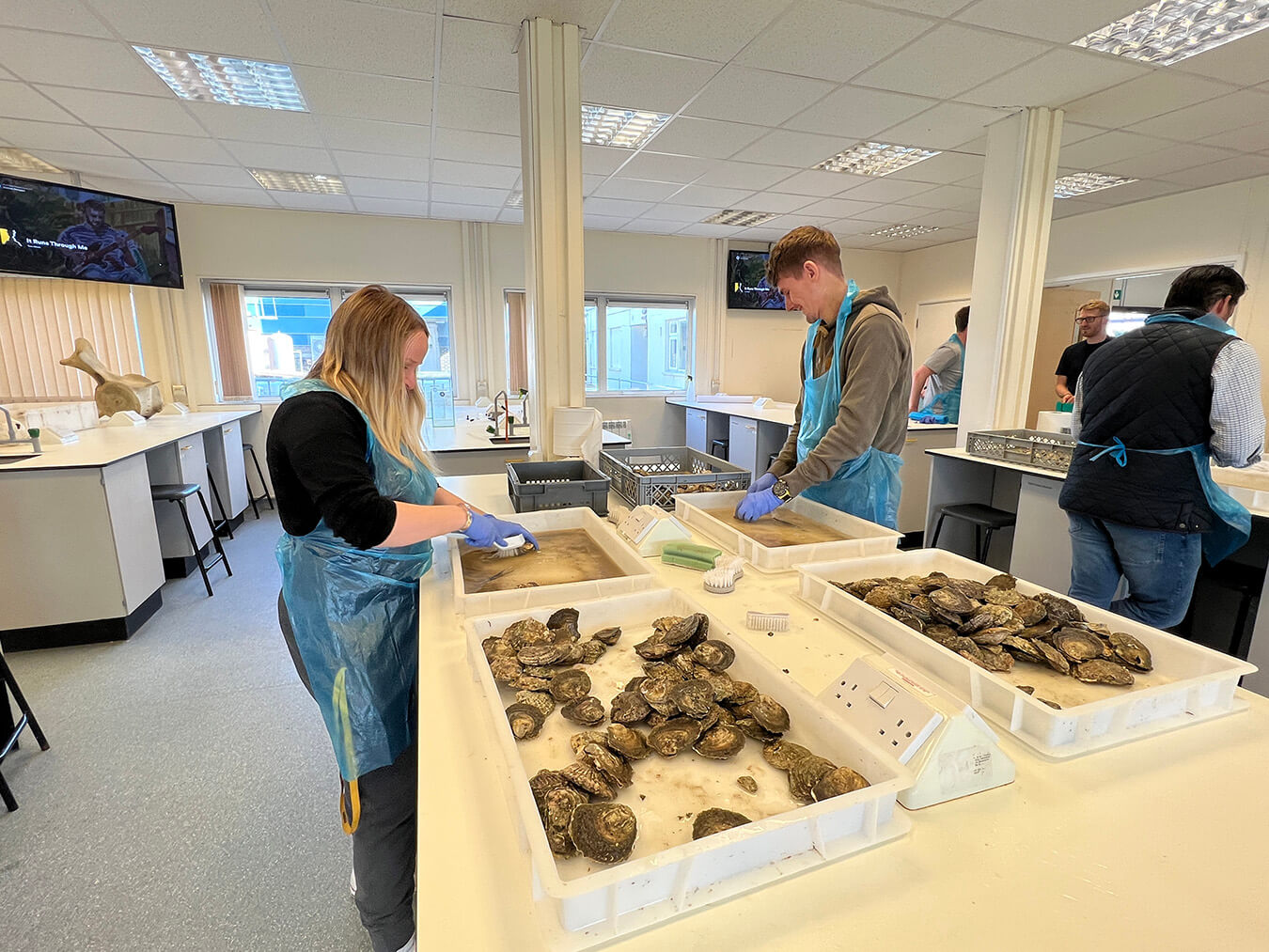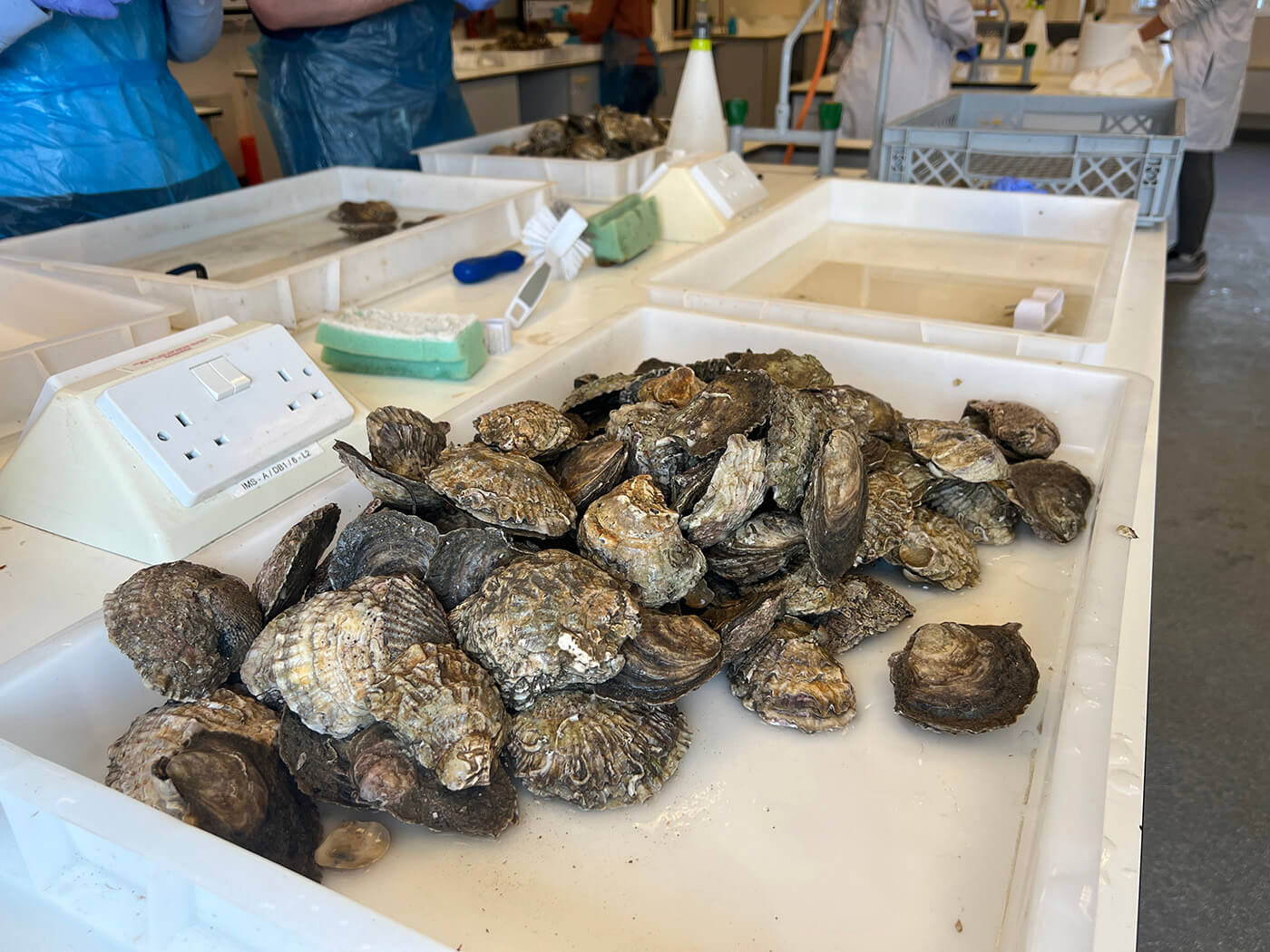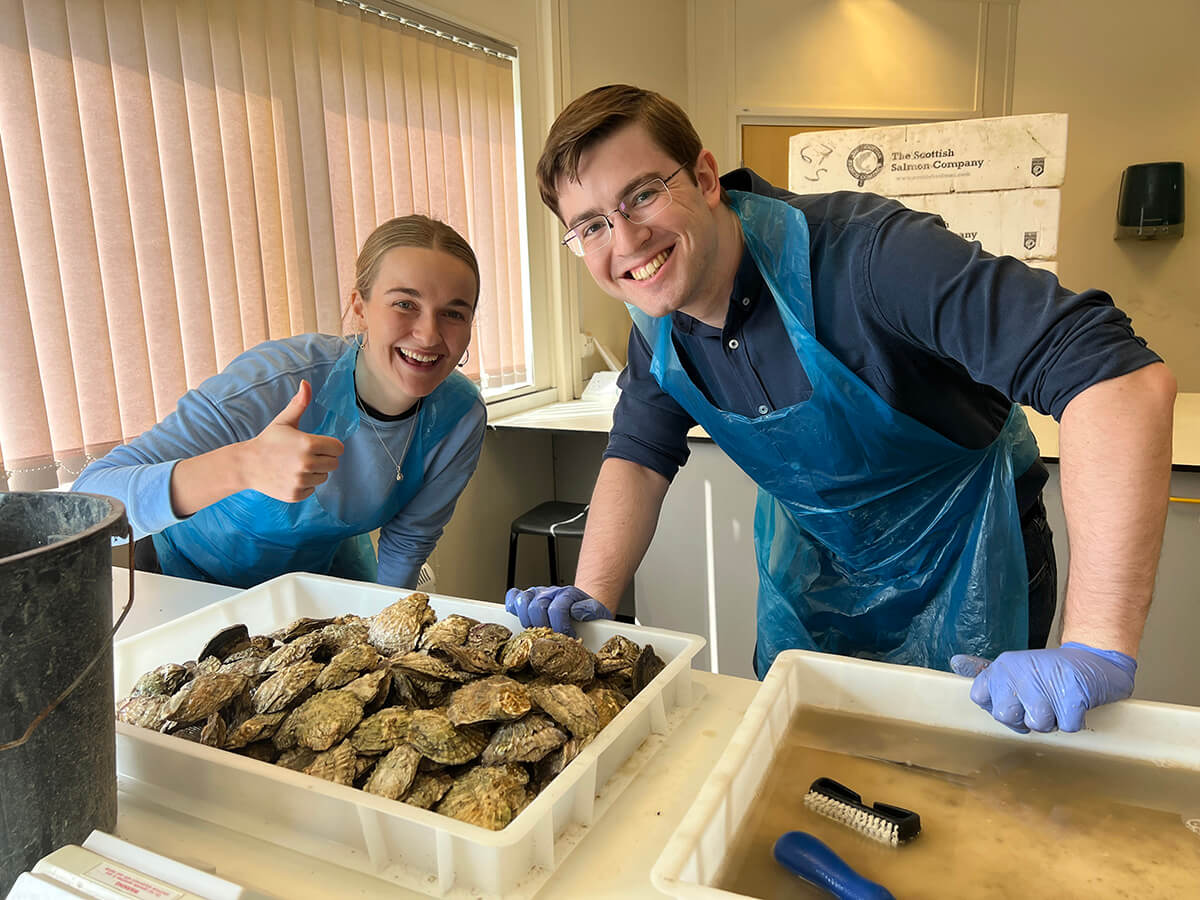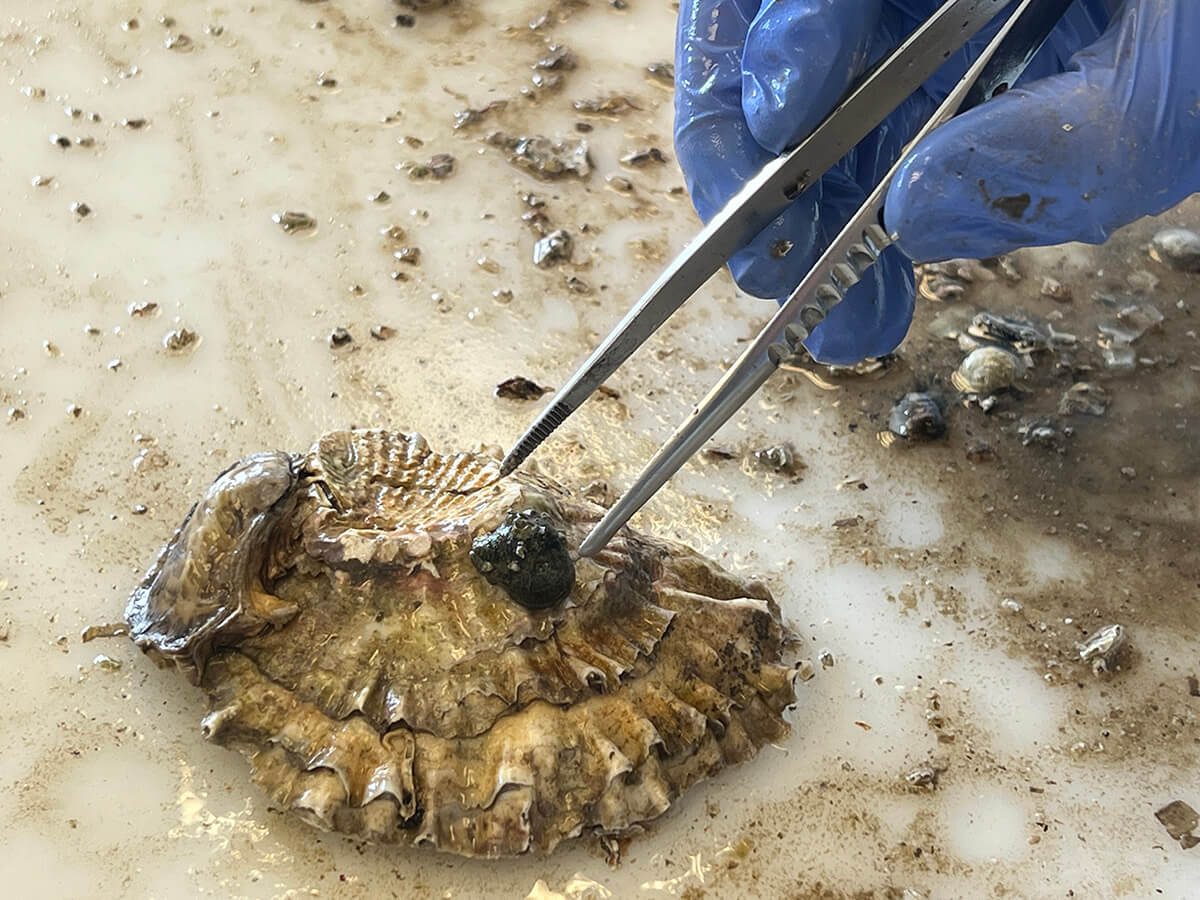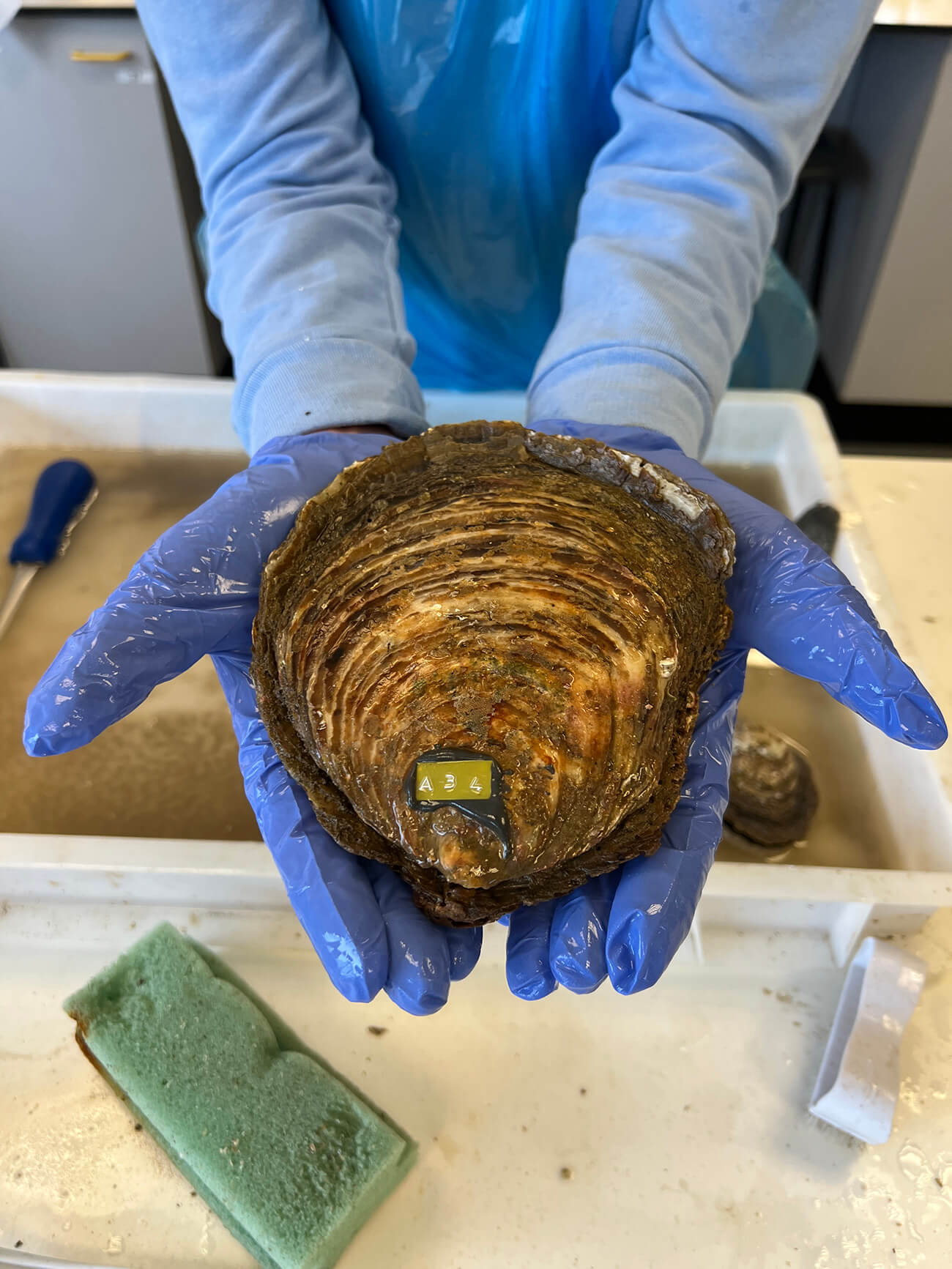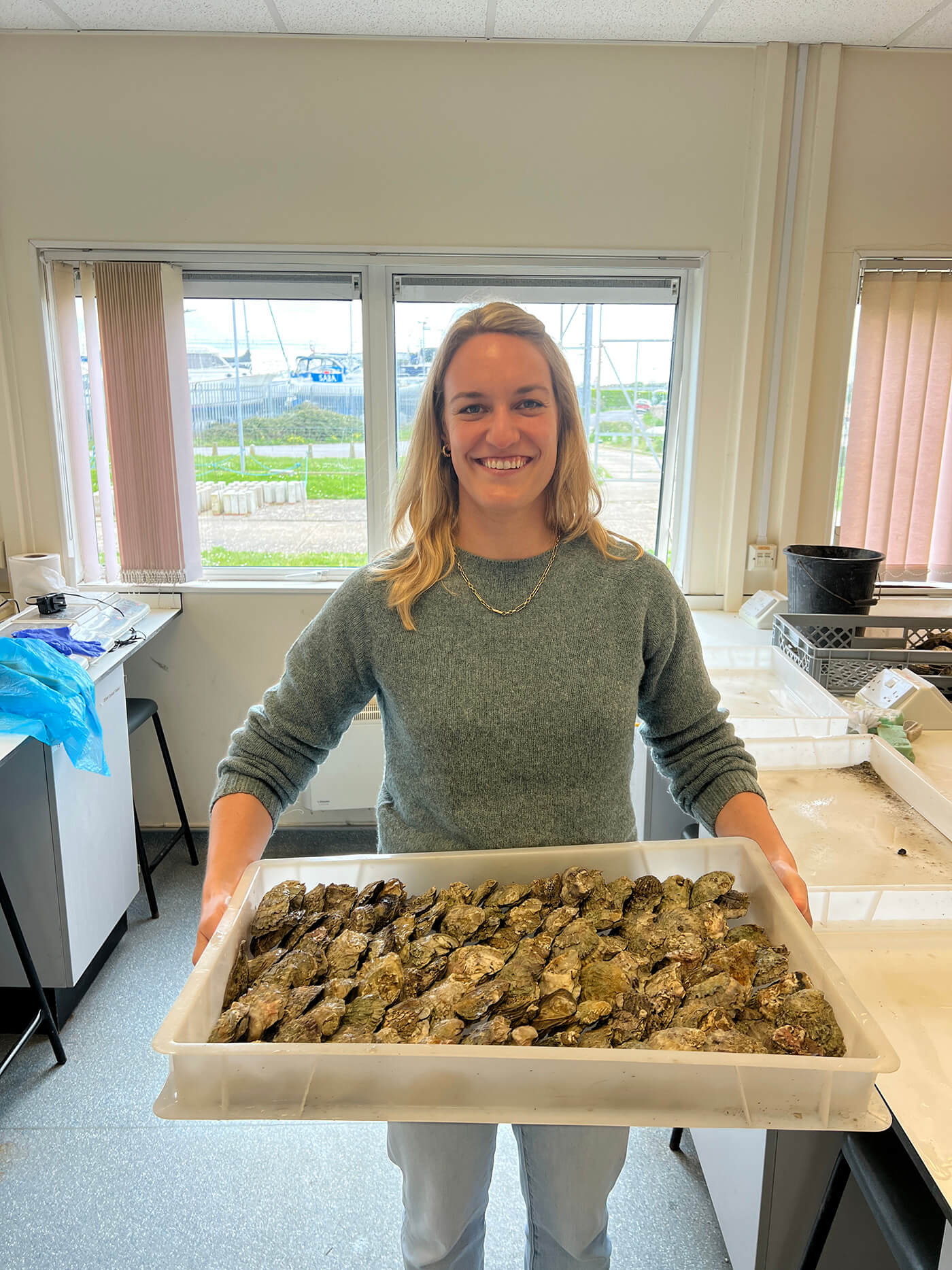Coolstays supported the restoration of approx. 584 sq m of native oysters in the Solent in 2023
Coolstays has chosen to support native oyster restoration in the Solent (the strait that separates the Isle of Wight from mainland England) in partnership with GreenTheUK and the Blue Marine Foundation.
Native oysters are classified as a priority species in the UK’s Biodiversity Action Plan and restoration is a high priority at the national, European and global level. An estimated 85 percent of oyster beds and oyster reef habitats have been lost worldwide, making them among the most imperilled marine habitats. As ecosystem engineers, oysters provide a range of benefits to the environment and local communities:
- They improve water quality: a single oyster can filter 200 litres of water every day
- They provide habitat to thousands of other species: fish and marine life
- They are a natural defence to coastal erosion
- They were a valuable food source (with evidence dating back to the Roman Times in the UK), yet this benefit has been lost due to their more recent dwindling numbers in the Solent
Coolstays has helped support the restoration of oyster reefs in areas protected from fishing to help re-establish wild populations. This work is in collaboration with the university of Portsmouth, where we have deployed adult oysters in the Solent on to newly formed reefs to significantly scale the restoration work. The aim of the project is to actively restore 4 hectares of oysters. Over two years, Coolstays has supported the restoration of approximately 584 square metres of native oysters. Find out more about the project below.
Project Overview
The Solent Oyster Restoration Project is part of a wider project called the Solent Seascape Project which aims to reconnect the Solent into a functioning seascape by improving the condition, extent, and connectivity of key marine and coastal habitats, using protection and restoration initiatives.
The Solent Seascape Project is the first of its kind in the UK to initiate seascape scale recovery. Our long-term vision is to protect and restore at least 30 percent of the Solent’s seascape, tipping the balance from a degraded state to a naturally expanding, connected and productive ecosystem. By restoring and connecting the Solent’s seascape, we will provide nature-based solutions to many of the issues currently affecting it and the people who depend on it, as well as helping to fight the impacts of climate change.
Oyster restoration has begun in the Solent, marking the start of the wildly ambitious five-year Solent Seascape Project which plans to restore marine habitats across the region.
Working closely with the River Hamble Harbour Authority and local contractors Jenkins Marine, Blue Marine finished laying the foundations for the largest oyster restoration reef in the Solent on 31 March 2023. A mixture of shingle and cockleshell, known as ‘cultch’, has been placed over 2,500 square metres of seabed in the River Hamble and will provide a home for 15,000 oysters to attach and grow in the coming weeks.
“After a year of logistical planning we carefully laid 468 tons of cultch on the seabed of one of the UK’s busiest waterways to form the foundation of our largest oyster restoration reef in the Solent. Seeing this project eventually come to fruition was such a proud moment for the whole Solent team as well as the contractors and regulators we have worked with to reach this milestone. Together we have done something amazing for nature.” said Louise MacCallum, Solent Project Manager at Blue Marine.
More than 150 volunteers assisted with the huge job of putting 14,939 native oysters – Ostrea edulis – through a stringent biosecurity process before they could be deployed on the new reef in the River Hamble. These oysters were sourced from an oyster farm in Pembrokeshire, South Wales.
Blue Marine Foundation’s Ambassador, HRH Princess Eugenie, visited the Solent Seascape Project for two days during April to help us with putting oysters through our biosecurity process and meet project partners for high tea at the top of the Spinnaker Tower, overlooking the entire seascape. The royal visit was covered exclusively by Hello! Magazine: https://www.hellomagazine.com/royalty/490062/princess-eugenie-reveals-why-motherhood-inspired-passion-project/.
Plans are progressing to create our next oyster reefs in Chichester and Langstone Harbours. Partnership work like this project has begun to drive forward multi-habitat, seascape scale restoration across the Solent region, with baseline monitoring of new saltmarsh and oyster restoration sites in Chichester Harbour, River Hamble and the Isle of Wight underway.
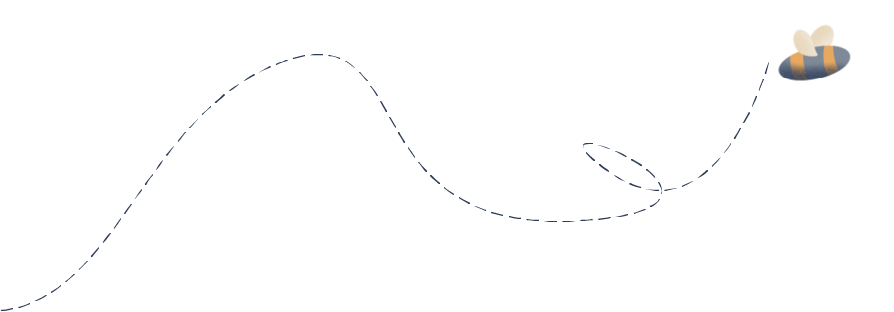
UN's Sustainable Development Goals
As a GreenTheUK partner, you support projects that are in line with the UN Sustainable Development Goals.

Take urgent action to combat climate change and its impacts.

Conserve and sustainably use the oceans, seas and marine resources for sustainable development.


















